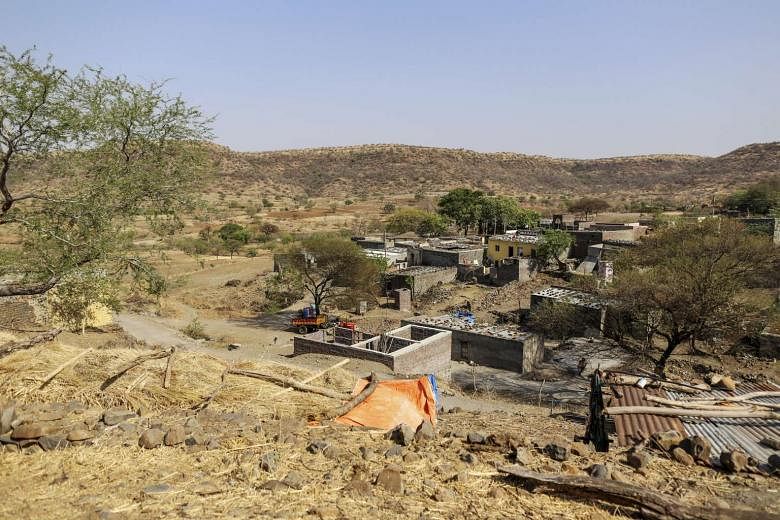NEW DELHI (AFP) - India's top court criticised the government on Wednesday (May 11) for failing to set up a disaster fund to help drought-hit farmers and villagers suffering crop losses and severe water shortages.
India is in the grip of its worst water crisis in years, with the government saying about 330 million people, or a quarter of the population, are suffering from drought after two weak monsoons.
Acting on a petition, the Supreme Court issued a slew of orders to the government including creating a national plan to tackle the crisis, a mitigation fund and standard procedures for declaring areas drought-hit.
Justice Madan B. Lokur also lashed out at the government over a lack of preparedness for the drought which has struck at least 10 states across the country.
"Evidently, anticipating a disaster such as a drought is not yet in the 'things to do' list of the Union of India and ad hoc measures and knee jerk reactions are the order of the day," Lokur said in a written judgement.
"We are also quite surprised that the National Disaster Mitigation Fund has not yet been set up even after 10 years of the enforcement of the DM (Disaster Management) Act," he also said.
Prime Minister Narendra Modi has recently met at least three state chief ministers over the drought, as the government comes under intense pressure to ease the crisis.
Rural Development Minister Birender Singh told parliament on Tuesday that millions in government funds have been released to drought-hit regions, as temperatures soar across the country in the summer months.
Industry body ASSOCHAM estimated on Wednesday the crisis would cost the economy US$100 billion if it continued until the end of the year.
Poor rains have prompted extreme measures including water restrictions, armed guards at reservoirs and water trains sent to the worst-affected regions.
Farmer suicides are high and some have migrated to cities and towns to work as daily wage labourers to earn money. Villagers in remote areas are being forced to walk long distances to source drinking water as local wells dry up.
Officials have forecast an above-average monsoon this year, offering hope for the struggling agriculture sector that employs about 60 percent of the population.
Farmers across India rely on the monsoon - a four-month rainy season which starts in June - to cultivate crops.



